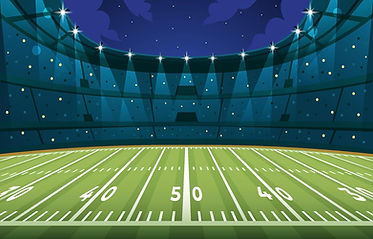

Revenue Generation & Financial Projects

Two Studies Informing Future Resource Allocation Decisions in College Athletics: Does Winning Always Matter? Has Transfer Portal Shifted Talent Distribution in College Sports?

2024-2025 Grant Project
Jeremy Losak, Ph.D., Syracuse University
Adrian Simion, Syracuse University
White Paper & Embedded Video Presentation
This project provides data-driven insights into two critical areas of college athletics resource allocation: the financial returns to winning across multiple sports and the impact of the NCAA transfer portal on talent distribution. Analyzing over 12,000 team-seasons across 18 sports, this research finds that most sports show minimal revenue sensitivity to winning, with men's basketball as the notable exception. Transfer portal analysis reveals that elite football programs increasingly substitute three-star high school recruits for transfer additions, creating a talent development pipeline where mid-tier programs develop athletes who subsequently transfer to top-tier institutions. These findings offer athletics administrators evidence-based guidance for resource allocation, roster construction, and recruitment strategy in an era of NIL compensation and increased athlete mobility.
Analyzing Consumer Demand for College Athletics in the NIL Era
2024-2025 Grant Project
J. Scott White, Florida State University
N. David Pifer, Florida State University
White Paper & Embedded Video Presentation
This study utilized three measures of consumer demand to assess overall trends before and after the implementation of NIL legislation beginning July 1, 2021: donations to college athletics departments, in-person attendance, and television viewership. Another important consideration is that the effect of NIL legislation may vary depending on conference affiliation, competitive success, and revenue levels. Consideration is provided to the potentially differential impact of these changes across types of institutions. Findings indicate donations have continued to increase following the implementation of NIL legislation. Attendance has declined in a small but insignificant way. Average television viewership from 2021-2023 was less than average viewership from 2018-2020. The white paper provides an initial descriptive analysis of our results, and future research will continue to refine these models by collecting and merging additional controls for institutional characteristics and policy changes.

Beyond Amateurism: NIL and the Post-2021 Spending Pivot in NCAA Division-I Athletics

2024-2025 Grant Project
Moonsup Hyun, The University of Louisville
Kevin Singer, The University of Louisville
Yo Han Lee, Old Dominion University
Jeremy Jordan, Syracuse University
White Paper & Embedded Video Presentation
This paper examines the spending behavior of NCAA Division I athletic departments in the wake of recent structural changes, including the implementation of Name, Image, and Likeness (NIL) policies. Results show significant differences in expense trajectories between P5 and G5 institutions post 2021. No statistically significant differences in pretrends between the two groups, in 2021, there was a negative and significant dip for P5 institutions, reflecting initial uncertainty (COVID-19) or reallocation of resources (NIL). Post 2021, P5 schools began to show a distinct spending pattern compared to G5 schools. These results suggest that NIL implementation catalyzed a new “spending race” among P5 schools, shifting the arms race from facilities toward athlete-focused categories. These patterns align with both the Resource-Based View; NIL intensifies competition for scarce talent, encouraging P5 programs to invest more heavily in athlete acquisition, retention, and performance infrastructure—even when direct NIL payments often flow through third-party collectives. P5 schools’ ability to marshal financial and organizational resources has allowed them to reinforce competitive advantages, while G5 institutions face structural disadvantages under the NIL landscape.
NIL COLLECTIVES IMPACT ON ATHLETICS DEPARTMENT GIVING
2022-2023 Grant Project
Nels Popp, Ph.D., The University of North Carolina at Chapel Hill
Chris Greenwell, Ph.D., The University of Louisville
Patrick Walsh, Ph.D., Syracuse University
White Paper & Embedded Video Presentation
NCAA Division I athletics departments have seen an increase in NIL collectives, entities funded by boosters which enable student-athletes to take advantage of NIL opportunities. However, when supporters give to NIL collectives, it could come at the expense of other fundraising efforts-- consequently a substitution effect is observed. In the current study, donors of ACC institutions were surveyed to gauge their opinions towards donating to NIL Collectives and how it might impact their intent to continue to give to athletics departments.


2020-2021 Grant Project
Jeremy Losak, Ph.D., Assistant Professor, Department of Sport Management, Syracuse University
Samuel Marteka, Undergraduate 4th Year Sport Analytics Major, Syracuse University
Mackenzie Mangos, Undergraduate 2nd Year Sport Analytics Major, Syracuse University
The Impact of College Conference TV Networks and Television Proliferation on College Football Attendance
Whitepaper & Embedded Video Presentation
Two key trends have materialized in college football over the past two decades: massive growth in live-game coverage and content and declining in-stadium attendance. This project aims to identify if there is a causal relationship between these trends—are declines in attendance caused by increased access to college sporting events on television? Does television act as a substitute or complement to in-person attendance?